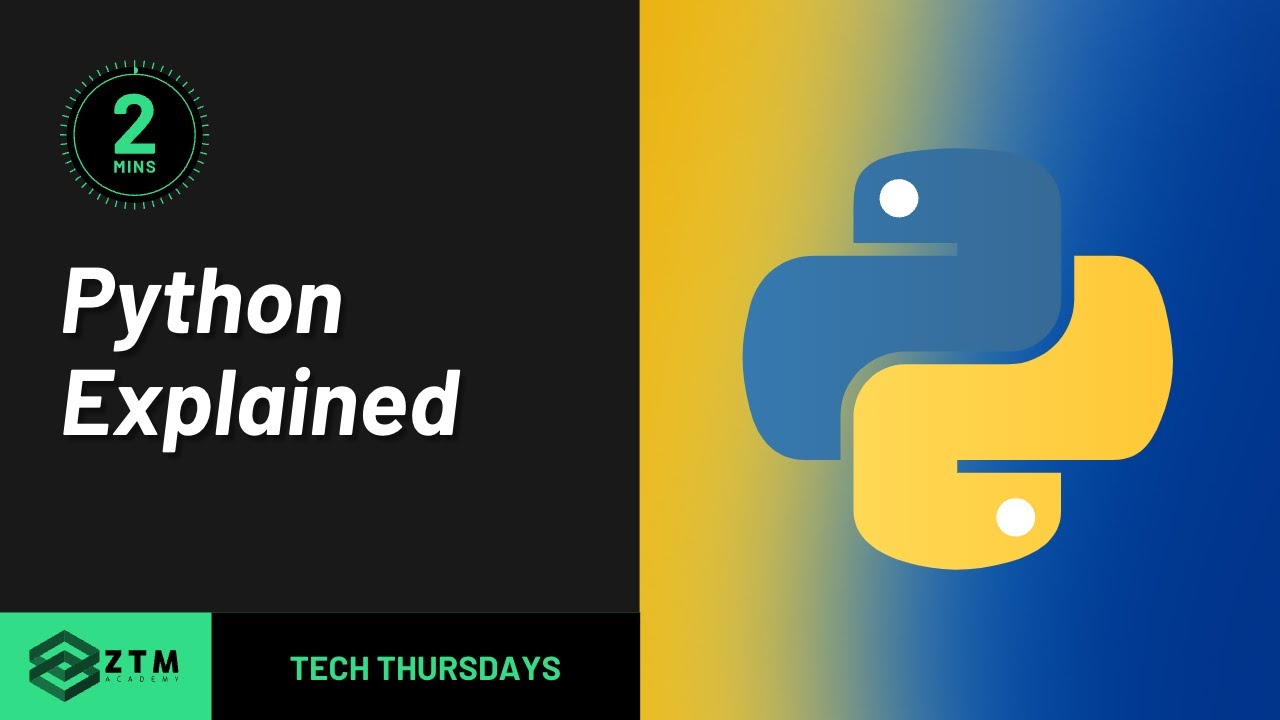Python - Introduction - W3Schools.com
Summary
TLDRIn this engaging introduction to Python, W3Schools highlights its simplicity and versatility, making it a favorite among programmers since its creation by Guido van Rossum in 1991. Python allows users to easily write code for web applications, data management, and automation, all while maintaining readability with its straightforward syntax. Ideal for both beginners and experienced developers, Python supports various programming styles and can run on multiple devices. The video encourages viewers to explore coding through hands-on practice, promising more tips and tricks in future content.
Takeaways
- 😀 Python is a user-friendly programming language created by Guido van Rossum and released in 1991.
- 🌍 It is widely popular for various applications, including web development, software creation, data management, and task automation.
- 🛠️ Python is versatile and can function as a 'Swiss Army knife' for programming needs.
- 💻 It works on multiple devices, from Windows PCs to Raspberry Pis.
- ✍️ The simple syntax of Python allows developers to write less code and achieve more.
- 🔄 Python supports various programming styles, including procedural, object-oriented, and functional programming.
- 📚 Its design emphasizes readability, using lines and spaces instead of curly brackets and semicolons.
- 👋 A basic example like 'print('Hello, World!')' demonstrates Python's simplicity and effectiveness.
- ➕ Python handles basic calculations easily, showcasing its capability for math operations.
- 🎥 Viewers are encouraged to engage with the content by liking, subscribing, and experimenting with Python in an interactive editor.
Q & A
What is Python?
-Python is a programming language created by Guido van Rossum and released in 1991. It is known for its readability and simplicity.
What are some applications of Python?
-Python can be used for web applications, software development, solving mathematical problems, and automating tasks.
Why is Python considered a popular programming language?
-Python's popularity stems from its versatility, ease of learning, and the ability to work on various devices, including Windows PCs and Raspberry Pis.
What programming styles does Python support?
-Python supports multiple programming paradigms, including procedural, object-oriented, and functional programming.
How does Python's syntax differ from other programming languages?
-Python uses indentation and whitespace to structure code, unlike many languages that use curly brackets and semicolons.
Can Python be used for data management?
-Yes, Python can manage big data and connect to databases, making it suitable for data analysis and manipulation.
What is an example of a simple Python command?
-An example command is 'print('Hello, World!')', which outputs a greeting to the console.
What kind of projects can you build with Python?
-With Python, you can build a wide range of projects, from quick scripts to complex software systems.
What tools can you use to code in Python?
-You can use a simple text editor or a powerful Integrated Development Environment (IDE) like PyCharm or Eclipse.
How does Python help with writing less code?
-Python's simple syntax and high-level abstractions allow developers to accomplish more with fewer lines of code.
Outlines

Cette section est réservée aux utilisateurs payants. Améliorez votre compte pour accéder à cette section.
Améliorer maintenantMindmap

Cette section est réservée aux utilisateurs payants. Améliorez votre compte pour accéder à cette section.
Améliorer maintenantKeywords

Cette section est réservée aux utilisateurs payants. Améliorez votre compte pour accéder à cette section.
Améliorer maintenantHighlights

Cette section est réservée aux utilisateurs payants. Améliorez votre compte pour accéder à cette section.
Améliorer maintenantTranscripts

Cette section est réservée aux utilisateurs payants. Améliorez votre compte pour accéder à cette section.
Améliorer maintenant5.0 / 5 (0 votes)






